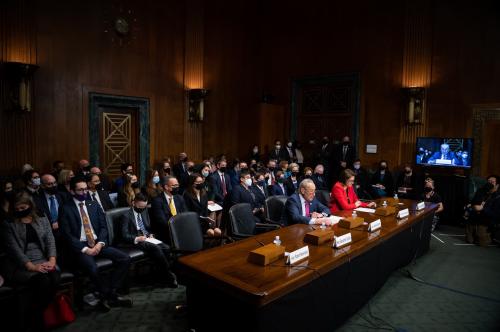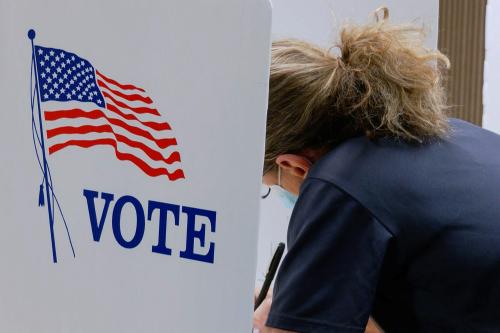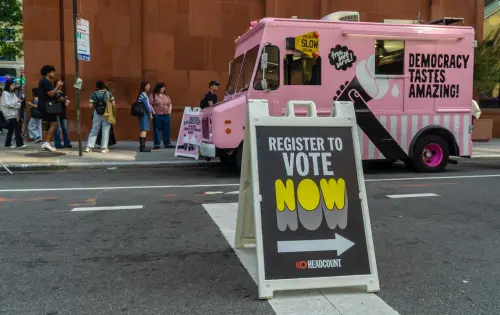In November, voters in at least 10 states will vote on ballot initiatives seeking to enshrine abortion rights in their state constitutions. Voters nationwide and in battleground states consider abortion to be one of the most important issues in this election.
For this and other reasons, it is critical that the public be informed about the issue. Here are five myths about abortion in America, compared to the reality.
MYTH #1: Many women are having abortions in the third trimester of pregnancy, including in the ninth month or later.
REALITY: The vast majority of abortions (93%) occur in the first trimester of pregnancy, according to the Center for Disease Control (CDC). So-called “late-term abortions” performed at or after 21 weeks of pregnancy are extremely uncommon and represent less than 1% of all abortions in the U.S. They generally occur because of the discovery of a fatal condition affecting the fetus or serious risks to the life or health of the mother. The claim that abortions happen “moments before birth” or even “after birth” is false. In no state is it legal to kill a baby after it has been born.
MYTH #2: The overturning of Roe v. Wade has led to fewer abortions.
REALITY: The number of abortions that occurred in the U.S. increased by 11% in 2023, the first full year since the Supreme Court overturned Roe v. Wade, compared with 2020 levels. This increase was driven primarily by the greater availability of medication abortion pills and privately financed funds that supported women seeking abortions.
MYTH #3: Because abortion totals have not declined, women cannot have been harmed by abortion bans and restrictions.
REALITY: Although many women living in states with abortion bans have been able to circumvent those bans by traveling to another state or by obtaining medication abortion pills using telehealth and the mail, others have not been so lucky. So even though abortion rates have increased, on balance, it’s still the case that many women who wanted abortions have been unable to get them.
In addition, abortion restrictions are putting women’s lives and health at risk. The same procedures used for terminating unintended pregnancies are also essential for addressing a number of other situations, including miscarriages, ectopic pregnancies, and severe fetal abnormalities.
Federal authorities have documented dozens of cases where pregnant women have been refused emergency medical treatment because doctors in ban states fear criminal prosecution. This has resulted in women having miscarriages in public restrooms, bleeding out in their cars, or experiencing delays in receiving care that have led them to develop infections or sustain bodily harm.
Already, a woman in Georgia named Amber Thurman has died from infection after doctors delayed performing a routine procedure out of fear of criminal liability under the state’s abortion ban. The state’s maternal mortality review committee called Thurman’s death “preventable” and said the delay in care had a “large” impact in causing her death. Other similarly tragic stories are sure to emerge once state review committees begin to publicize their findings, which operate with a lag.
MYTH #4: Depending on who is elected, there will be a federal law either banning or legalizing abortion nationwide.
REALITY: It is highly unlikely the election will change the composition of Congress enough to give either party sufficient votes to pass a federal law either banning or legalizing abortion nationwide.
Vice President Harris has consistently supported abortion rights over the course of her political career. As the Democratic presidential nominee, Harris has said she supports legislation that would restore the protections established by Roe v. Wade. She has not answered the question about whether she opposes any restrictions on abortion. Under Roe v. Wade, states could only restrict abortion after the point of fetal viability, or about 22 weeks of pregnancy, except in cases where abortions were necessary to protect the life or health of the pregnant person.
Former President Trump’s position on a national abortion ban has wavered significantly over time. As president, Trump supported a 2018 bill that would have banned abortion after 20 weeks of pregnancy nationwide. Earlier this year, Trump signaled support for a 16-week and then a 15-week abortion ban. His current position is that the legality of abortion should be left to the states. During the presidential debate against Vice President Harris, Trump declined to say whether he would veto a national ban if he were reelected.
To enact legislation that would protect or ban abortion nationwide, the party that won the presidency would also need to secure majorities in both the House and Senate. All three are shaping up to be tight races. Because it is highly unlikely either party will secure sufficient support in this election, including the 60 votes needed to overcome the Senate filibuster, neither will be able to pass a federal law codifying abortion policy nationwide. This means those in favor of protecting reproductive rights need to do so through the kind of measures that will be on the ballot in many states.
MYTH #5: Women living in states where abortion is legal will not be affected by the outcome of the 2024 election.
REALITY: Federal regulation, largely determined by executive agencies operating under the authority of the president, plays a major role in determining access to abortion.
In recent years, the Food and Drug Administration (FDA) has made multiple revisions to its policy toward mifepristone (one of the two drugs used in medication abortion) that have made medication abortion far more accessible. These pills are now widely used, accounting for nearly two-thirds of all abortions nationwide.
If Trump were reelected, he could limit the use of these abortion pills by appointing a new head of the FDA or Health and Human Services (HHS) who could reverse the FDA’s revised policies toward mifepristone or override the agency’s approval of the drug completely.
Trump could also direct the Department of Justice (DOJ) to enforce a 151-year-old federal law known as the Comstock Act that bans the shipment of abortion-related materials. In 2022, the DOJ under the Biden-Harris administration issued a legal opinion stating that the Comstock Act does not prohibit the mailing of abortion drugs even to recipients in states where abortion is banned. Trump could direct the DOJ to reverse this position to instead outlaw and prosecute the interstate shipment of abortion pills, or other materials related to abortion.
The Heritage Foundation, as part of its Project 2025 initiative, has called for a potential future Trump administration to end medication abortion and prosecute those who ship and transport abortion pills and supplies using these strategies. As Jonathan Mitchell, an anti-abortion advocate and key architect of Project 2025, said to the New York Times, “We don’t need a federal ban when we have Comstock on the books.” Trump has sought to distance himself from the Project 2025 plan whose authors include many former members of his administration.
When asked about these issues during a news conference at Mar-a-Lago in August, Trump said he was receptive to using his authority as president to revoke access to abortion pills. A couple of weeks later, Trump said that he “generally speaking would not” use the Comstock Act to outlaw the shipment of abortion pills.






Commentary
Five myths about abortion in the US
September 27, 2024